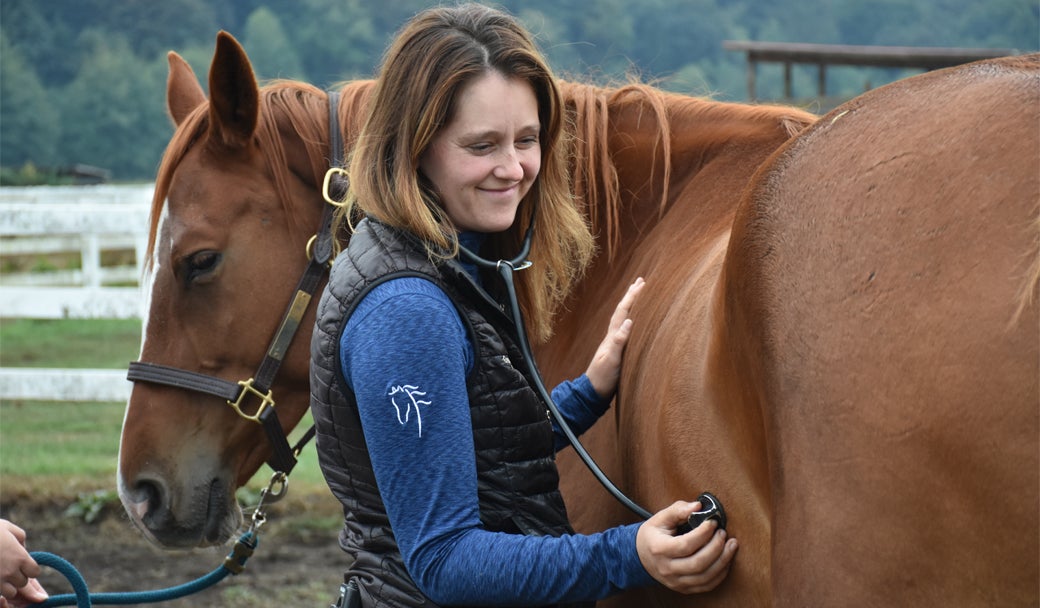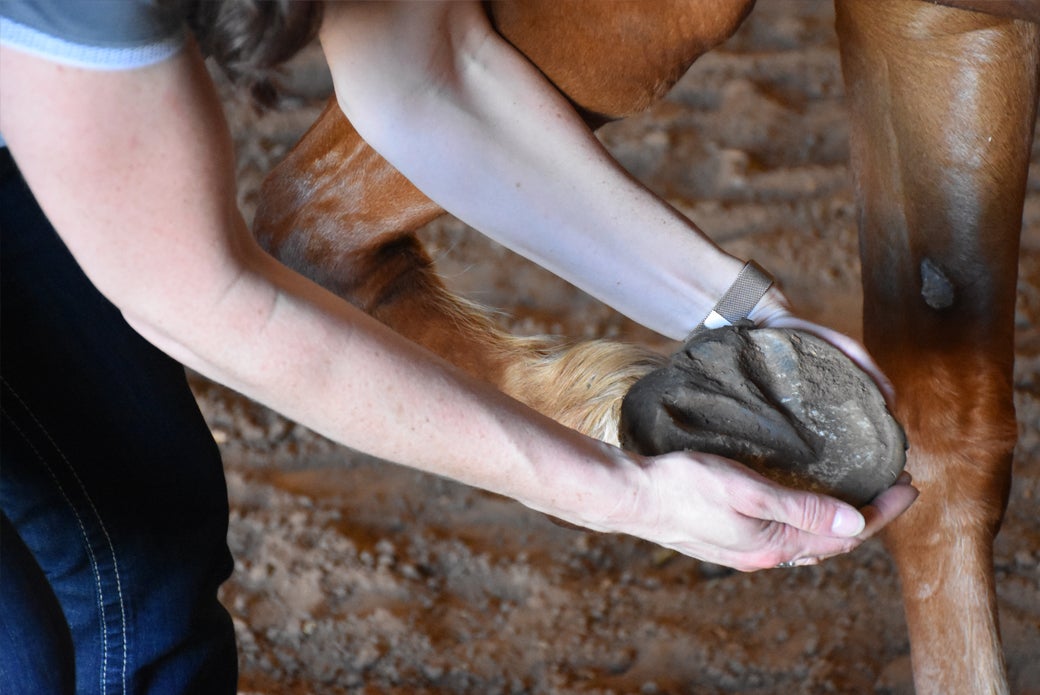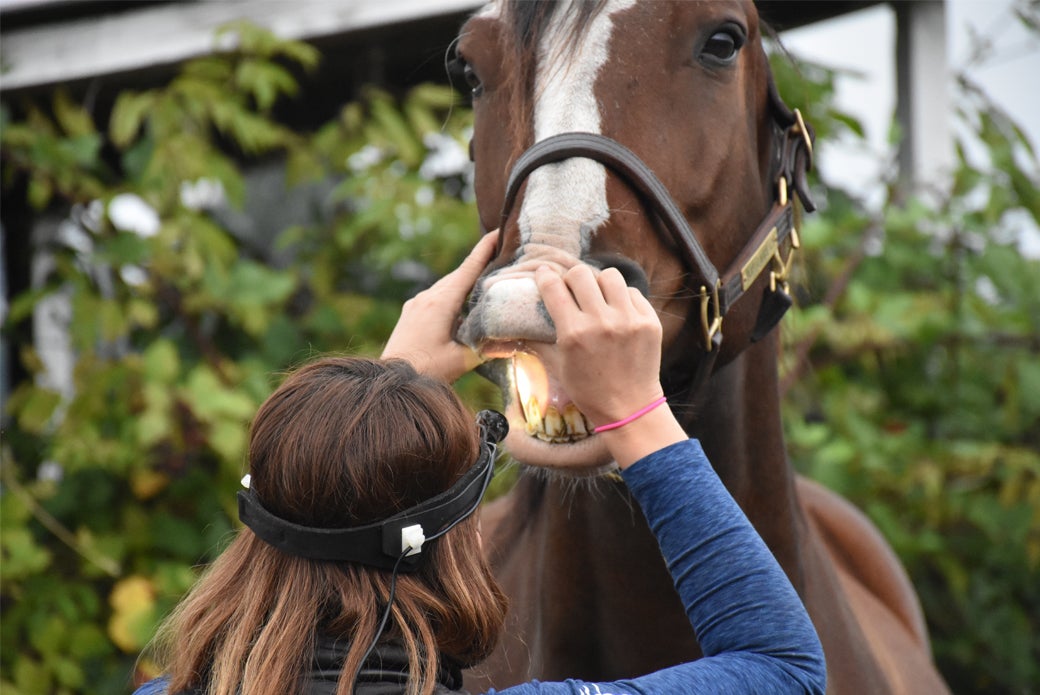
Cracking Horse Code – Part Three

If you’re new to the world of horses, you can feel like most people in the barn speak a new language. We’re breaking down some of the common horse-care and health terms you’ll likely hear. And if many of these terms are new to you, don’t worry. Equine adoption is a friendly entry point into the horse world. If you’ve dreamed of getting involved with horses, adoption can be a great way to get started.
Common horse-care descriptors:

Farrier – A farrier is an equine professional who specializes in caring for a horse’s feet. Most horses require a trim every 6-8 weeks. Some horses, especially those with weaker hooves or those in heavy training or work, also receive special horseshoes at each appointment. Horseshoes are typically made of steel or aluminum but can also be made of plastic.
Hot shoe – Sometimes a farrier will bend pre-made shoes into the perfect shape using a hammer and anvil. Other times, a farrier will heat up the shoe so it’s highly malleable and can easily be shaped into the perfect fit! When heat is used, the process is called hot shoeing.
Deworming – Similar to other animals, horses need to be dewormed to prevent unwanted parasites from causing harm. Usually, a veterinarian will take a fecal sample to test for worms and recommend the most appropriate product.

Float – Horses' teeth are continually growing. Depending on their diet and anatomy, horses’ teeth often wear unevenly, leaving sharp points and ridges that can cause sores in the mouth and prevent them from chewing properly. Consequently, most horses need to have their teeth “floated” each year. During a float, the veterinarian carefully levels out a horse’s teeth and removes any sharp edges. The veterinarian will also check for loose or rotted teeth during the exam.
Colic – Colic is a broad term for a variety of conditions affecting a horse’s gastrointestinal system. Colic can be caused by many things, including impacted feed in the digestive system and gas. Horses experiencing colic will usually show signs of discomfort: stretching or straining, disinterest in food, lying down and getting back up frequently, yawning and biting at their abdomen are all common symptoms. Some cases of colic are minor and resolve on their own, but many need veterinary intervention.
Lameness – When a horse has an irregular gait due to pain or injury, they’re considered lame. Lameness can have a variety of different causes and a veterinarian will perform diagnostics to identify the issue.
Founder – A horse’s hoof is more than meets the eye. Underneath the hard exterior, sensitive, blood-rich tissue called laminae connect the hoof wall to the soft tissue inside the hoof. The laminae can become inflamed for several reasons, but inflammation most commonly occurs due to consuming too much lush grass. When they become inflamed, damage to the hoof can occur causing intense pain for the horse. If caught early, this condition is treatable and can be managed in the future through diet.
Abscess – A hoof abscess is not an uncommon occurrence in horses. Any injury or trauma to the hoof, even something as simple as stepping on a sharp stone, can lead to a pocket of infection in the hoof. Horses with an abscess tend to become extremely painful with little warning, however, hoof abscesses are usually quickly resolved by opening the pocket of infection and keeping the hoof clean and protected while it heals.
Now you know many of the basic horse-care descriptors. If you haven’t already, learn more about the different general equine terms, discipline and movement descriptors, common coat colors and breeds you’ll encounter and become a true equine expert!
If you’re ready to learn more about equine adoption, visit My Right Horse. There, you can browse hundreds of adoptable horses, learn more about the adoption process and easily share your favorite horses on social media to help connect the right horse to the right person.
